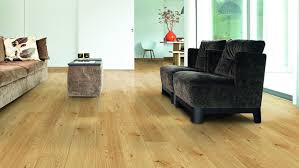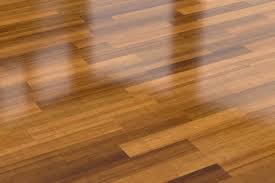Best Methods for Cleaning Laminate Floors
Ever take a look at your laminate flooring and just think it looks blah and dull? Over time flooring can lose its shine and spark that it once had, leaving you unhappy with your homes’ appearance. Between the constant flow of traffic and the usual day to day mishaps, you might notice your floor starting to look less vibrant. Here are a few do’s and don’t’s of how to restore laminate floor shine.
DO: Clean Regularly
Sweep your floor a couple of times a week, if not every day, to remove debris from your flooring. Those little bits of rock and dirt that hangs on to your shoes, can become ground into your laminate, causing micro scratches on the surface. This will leave your laminate flooring looking dull and uninviting. You should also mop regularly with a cleaner specialized for laminate flooring. Other products can cause build up over time, which will dull your flooring.
DON’T: Use Wax
Never use wax. Unlike wood, wax on laminate will leave a dull hazy look. Not to mention the residue the wax leaves collects dirt and build up making cleaning your laminate next time a little harder. Laminate flooring does not need the upkeep that hardwood flooring does and should be treated like a separate type of flooring. If a cleaner/maintenance product says it’s for hardwood floors, it’s best to leave it on the shelves.
DO: Make Your Own Cleaning Solution
Create your own natural solution. We recommend using a mixture of water and vinegar to bring the best shine back. This is a smart solution as it is cheap, resourceful, and easy to do on your own. Since vinegar has anti-bacterial properties, it will remove any residue and give a thorough clean to your floor!

How to Clean Laminate Floors
The best way to clean laminate floors is to spray an appropriate cleaning solution onto the right kind of mop, wipe the surfaces, and make sure they dry quickly. It’s as easy as that! Just remember to:
Choose appropriate cleaning products and methods to prevent damage to your floors.
Microfiber mops are your best choice when it comes to cleaning laminate floors.
- Remove larger particles first – use a dry mop or a vacuum cleaner with a soft bristle brush to clear away hairs, grit, crumbs, etc. Otherwise, the particles will get spread around when mopping the floor and will leave streaks and residue behind. They can even scratch and pit the laminate surface;
- Use a cotton, terrycloth or microfiber mop to clean laminate floors – those mops can quickly cover large areas, easily get under tables and chairs, and efficiently pick up all the accumulated dirt and dust. What is more, they require little water which is of paramount importance as laminate flooring will warp if exposed to too much moisture;
- Purchase a specialized laminate floor cleaner (strictly follow the usage instructions and always test a product you haven’t used before on a small inconspicuous area first) or prepare an effective home-made solution out of three parts water, one part vinegar and just a squirt of mild dish cleaning (or glass cleaning) liquid. Put your cleaning solution in a spray bottle and get down to work;
- Dampen the mop pad with hot water and spray the cleaning solution on it;
- Mop the floor without scrubbing or pushing too hard. Rinse the pad when it gets too dirty (you will not need to rinse the pads often, so there is no need to haul a bucket of hot water around the house) and replace it if you intend to clean more than one room. You can machine wash dirty pads afterwards and use them several times, so purchase a couple of spare pads and don’t hesitate to replace them whenever necessary;
- The floor should dry within several minutes after cleaning. If you have used a proper cleaning solution and a microfiber mop, there will be no streaks left.

What to Avoid When Cleaning Laminate
There are plenty of no-nos to consider when it comes to cleaning laminate floors, so follow these tips to avoid damaging the surface or the layers of the flooring.
- Do not use steam cleaners. The heat and moisture will affect the glued layers and result in water damage over time.
- Do not soak the floors with a drippy mop.
- Bristle brooms have a tendency to leave behind particles that can contribute to surface wear; it’s best to stick with a soft microfiber dry mop.
- Avoid products that promote a shine. The waxy buildup can be difficult to remove.
- Do not use wood cleansers, like Murphy Oil Soap. It will leave residue on the surface and look streaky.
- Avoid abrasive scrubbers, like scratchy sponges or steel wool. Even baking soda, when applied and rubbed aggressively, may damage laminate floors.
- Vinegar, though a popular ingredient in homemade cleansers, is highly acidic and can break down the surface of the laminate when used in high concentrations over time.
How to Protect Laminate Floors
- Wipe up wet spills immediately. Water + Laminate = Disaster.
- Use glides or pads on the bottom of your furniture.
- Try to lift furniture as you move it or place carpet or padding under heavy furniture as you move it across laminate flooring to avoid scatching the surface of the laminate floor.
- Place mats under your furry friend’s water bowl and consider a mat under your baby’s high chair.
Here are some general floor cleaning tips for this type of flooring:
Vacuum Cleaner:
It’s convenient and it’s important to vacuum your laminate floors frequently to remove dust and grime. The dust has abrasive materials that can cause scratches.
Wet Cleaning:
Wet cleaning is recommended to clean laminate floors once a week or less. You can use a soft microfiber cloth. Always clean floor plank lines. Use only a damp cloth as the water can damage laminate floors. It is recommended that you only use the laminate cleaner recommended for cleaning your floors.
Things To Avoid:
You should not use wax, varnish, or any product based on vegetable oil, cleaning powders, sanding pads, or steel wool to polish or clean laminate floors. This product damages the floor surface. Also, avoid using cleaning products such as vinegar, ammonia, or floor cleaning solutions that contain chlorine. Every time you use them, it eats away at the surface, making it dull and removing the top protective layer.
Cleaning Fluids And Spills:
If the liquid is spilled on the floor, it must be cleaned immediately. It can stain the floor or get into the seams. Use a paper towel or soft cloth to wipe and soak up any spills. Moreover, neutral detergents, nail polish remover, or acetone can remove grease, permanent markers, or paint stains.
How To Maintain Laminate Floors
Laminate floors are a great addition to any home. But, the problem comes into play when you’re not sure how to maintain your flooring and restore it if some areas need repair.
It’s a good thing that you’ve clicked on our post because we’re going to give you some tips to help you upkeep your laminate flooring and enjoy it for more years to come.
Mop the Floor Regularly
Mopping your laminate flooring can ensure that any of the spills or stains don’t remain in the flooring after you’ve cleaned it. When mopping, however, you need to ensure that you don’t use too much water.
The reason for this is because laminate flooring is made of something called presswood. When you oversaturate the flooring with water, it can cause the floor edges to begin to curl, and then you’ll be looking at repairing those areas of the floor that have started to swell.
When mopping, dampen the mop shaking off excess water, and then proceed to mop your floor.
Sweep
It can be easy for dirt and particles to become trapped in your flooring, which brings us to our next tip. You need to sweep the floor regularly. Depending on the type of broom you’re using, it can be challenging to get into all of the spaces that dust can get trapped.
If you cannot reach these places, the next best thing to do is grab your vacuum. Using the vacuum attachment, you can easily get the spaces where a broom won’t reach and remove all of the trapped dirt.
Ensure that you change the vacuum setting so that your floors don’t become scratched while you’re trying to clean it. The last thing you want to do is destroy your flooring because you didn’t switch the vacuum setting.